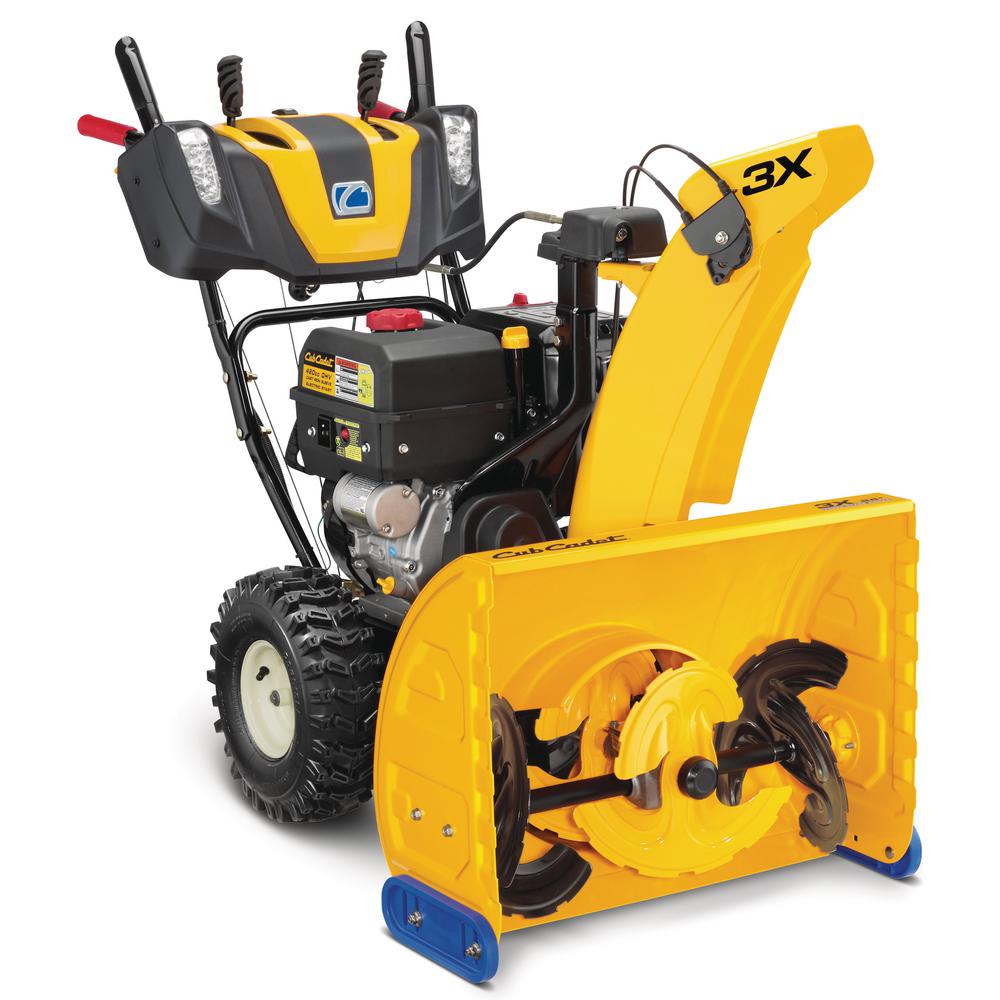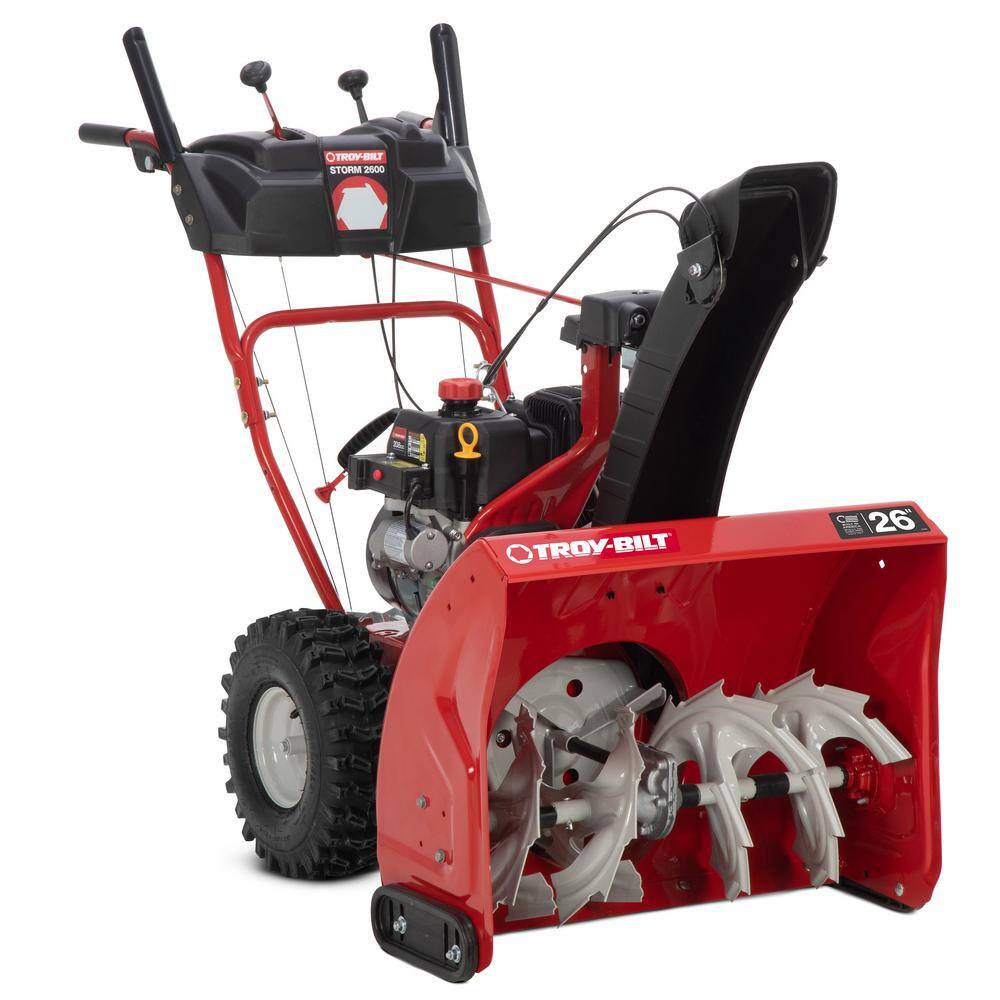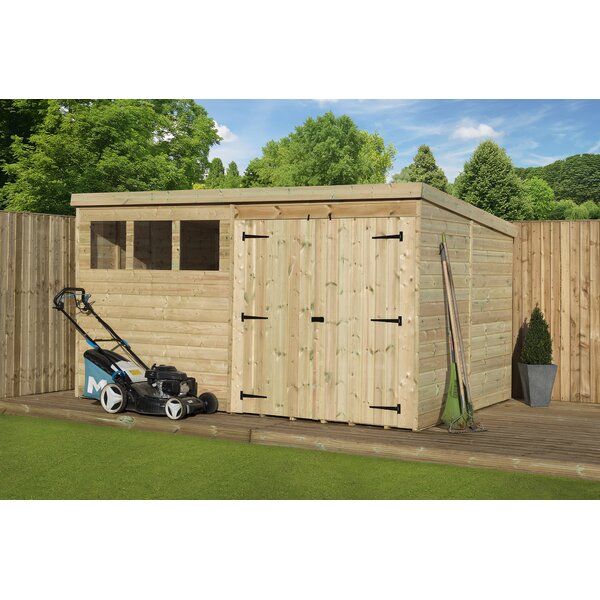Cub Cadet 3X 26 in. 357 cc Three-Stage Gas Snow Blower with Electric Start and Steel Chute, Power Steering and Heated Grip
357cc cub cadet electric start engine with 26 in. clearing width. Crank chute rotation and pitch control with steel chute. Power steering with fingertip trigger controls and heated grips.
Introducing the revolutionary new Cub Cadet 3X 3-Stage snow blower. These industry exclusive cuts through tough packed snow and ice like no other machine available today. The 3X’s unique high-speed Induction Accelerator draws snow through the system, creating an effortless forward motion. No backups. No ride ups. No spill over. This new 3X technology easily cuts through deep snowfall up to 50% faster than 2-Stage snow blowers. There’s no stopping the next generation of Cub Cadet Snow blowers. The ultimate snow throwing control with OHV Crank (2.5 turn chute rotation), 200 degree.
-
Brighter, longer, broader, see better in the light of new LED dual headlights, before dawn, after dusk, work in the dark with the help of LED headlights
- Ideal snowfall range: 6 in. to 16 in.
- Ideal surfaces: smooth and gravel surfaces, flat to slight slope
- 26 in. clearing width, 21 in. intake height
- Heavy-duty high-arc steel chute
- 357 cc electric start Cub Cadet 4-cycle OHV engine
- Clear snow faster: new 3X induction accelerator moves snow up to 50% faster than 2X snow throwers
- Trigger controlled power steering at your fingertips for unmatched control, effortless maneuverability and 1-hand operation
- Heated hand grips for added comfort
- Revolutionary cool blue skid shoes glide along surfaces for better maneuverability and won’t rust or damage your driveway
- Single-hand 4-way chute control adjusts the heavy-duty high-arc steel chute rotation and pitch with 1-hand for the ultimate snow throwing control
- 16 in. x 4.8 in. X-Trac tires provide solid traction in extreme weather conditions
- Throws snow up to 40 ft.
- Use with 5-Watt to 30-Watt oil for best results, unit comes pre-filled with oil
- You’re covered winter after winter with a premium 3-year limited residential and 1-year limited commercial warranty and 5-year limited auger gearbox
Additional information
| Assembled Depth x Height x Width (in.) | 49 x 34 x 28.5 |
|---|---|
| Auger Diameter (in.) | 12 |
| Clearing Width (In.) | 26 |
| Ideal Snow Depth (In.) | 6 |
| Intake Height (in.) | 21 |
| Tire Height x Width (in.) | 16 x 4.8 |
| Certifications and Listings | No Certifications or Listings |
| Manufacturer Warranty | 3-Year Limited Residential, 1-Year Limited Commercial Warranty |






by Paul
Added gas and this thing threw even the heaviest and wettest snow about 15 feet… regular light snow, 40 feet.. EASY. Started on the literally FIRST pull.. this is amazing!! So pleased!!!
by Rebecca
I purchased this blower the end of last winter. I was able to use it twice before the season ended. I added a little sea foam over the summer and ran the gas out. The start of this winter, filled with gas and it was ready to go with one pull. The ease of blowing snow is now super easy for this single mom. As long as you don’t suck up any dog toys and get them stuck in the auger, I learned the hard way and just had to replace the belt because of it. Other than that mishap, I have had no issues with my blower and it does a fantastic job blowing the snow. I love getting out there at 6am and the lights are so powerful I can see everything while my hands are nice and warm on the handles. This is an excellent blower, I highly recommend!
by Kathleen
This snow blower is amazing and we’ve named him the Yetti. Had 20+” of snow upstate New York, took him out a couple of times and handled it like a champ. The end of the driveway was no challenge for this machine. In fact, it thrives in deep snow! Also did not get clogged in the shoot, not once. Highly recommend!
by Chris
Nice unit. Started easy and ran strong during first use.
by Drew
This snow blower worked flawlessy in a wet snowfall. It made clearing my driveway and sidewalks a breeze, especially after the plow came through. The reverse speeds are painfully snow, but it more than makes up for it with power. Headlights and heated hand grips are a good added bonus.
by Sherry
First snow was heavy, wet, & slushy base. This machine handled it easily.